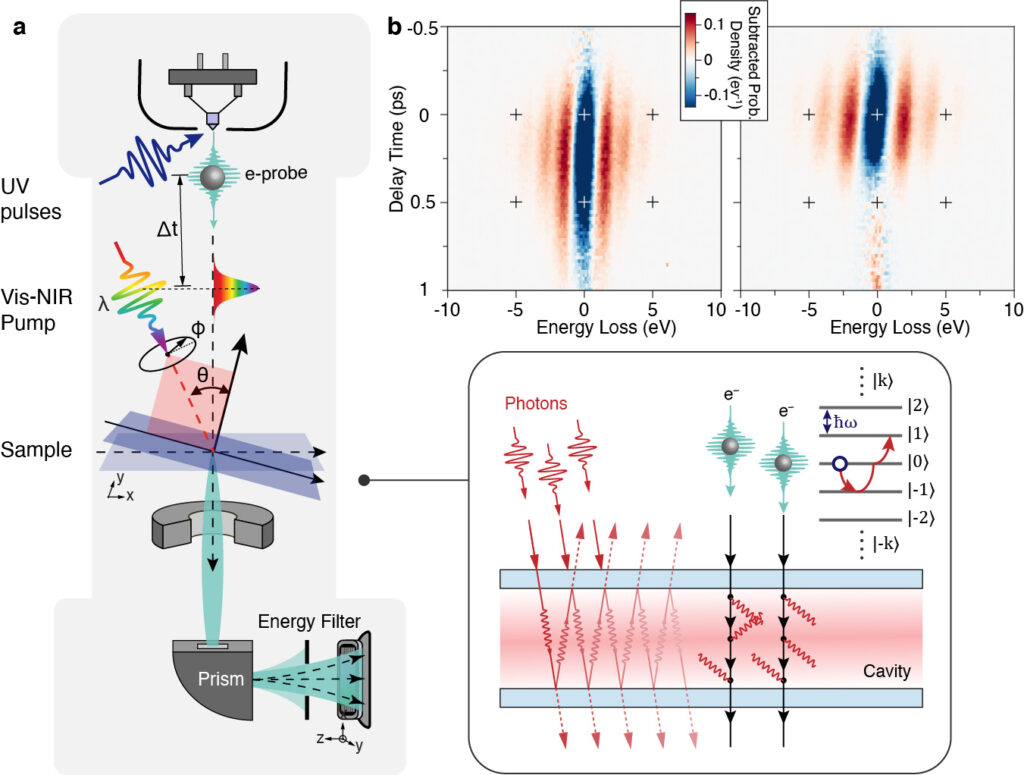Coherent interaction between free electrons and a photonic cavity
§ Selected for Research Highlights in Nature Reviews Physics and featured in phys.org and in various Israeli media outlets
The investigations on interactions between bound electron systems and photonic cavities, also known as cavity quantum electrodynamics (CQED, has been paramount for realizing new physical effects (e.g. 2012 Nobel Prize for Physics) and applying them for quantum technologies. However, the bound electron systems (such as atoms, quantum dots, and quantum circuits) are limited in their fixed energy states, spectral range, and selection rules.
We realize that the photo-excited free electrons from the electron gun in our UTEM can be considered as quantum free-electron wavepackets. Such photo-excited free electron wavepackets have tunable energy states, wide spectral range, and unlimited transition rules. Can we use these quantum free-electron wavepackets to interact with the photonic cavity instead of the bound electron systems to open more possibilities for new physics?
Our work reports the first photonic cavity effect realized for free electrons, thanks to the strong interaction strength and long light confinement duration from the high-Q Bloch modes from a photonic crystal cavity. We directly observed the decay of confined photons of a cavity mode. The high-Q cavity was also used to enhance the strength of the electron–photon interaction by about 30 times comparing to previous reports, with a record low pulse energy down to 100 pJ. Additionally, we showed a powerful near-field optical microscopy based on UTEM which is best in many aspects. With such technique, we obtained the Bloch modal images showing how the light was trapped in photonic crystal for first time and measured its bandstructure. We would like to nurture multi-disciplinary collaborations from the results and techniques showed in this work.

Figure 1 | Experimental scheme for cavity quantum electrodynamics (CQED) with quantized free electrons in the ultrafast transmission electron microscope (UEM). a, UEM setup, offering five degrees of freedom to measure the electron¬¬–cavity interactions. We can image the electrons with or without energy-filtering. Inset: schematic image showing the quantized interaction of free electrons with cavity photons, where the electrons are dressed into an infinite quantum energy ladder equally spaced by the photon energy ℏω. b, Time-resolved difference EELS map after subtracting the zero-loss electrons, showing the difference between high-Q and low-Q photonic modes. The high-Q map (left) is elongated and time-asymmetric in contrast with the shorter and time-symmetric low-Q map (right)

